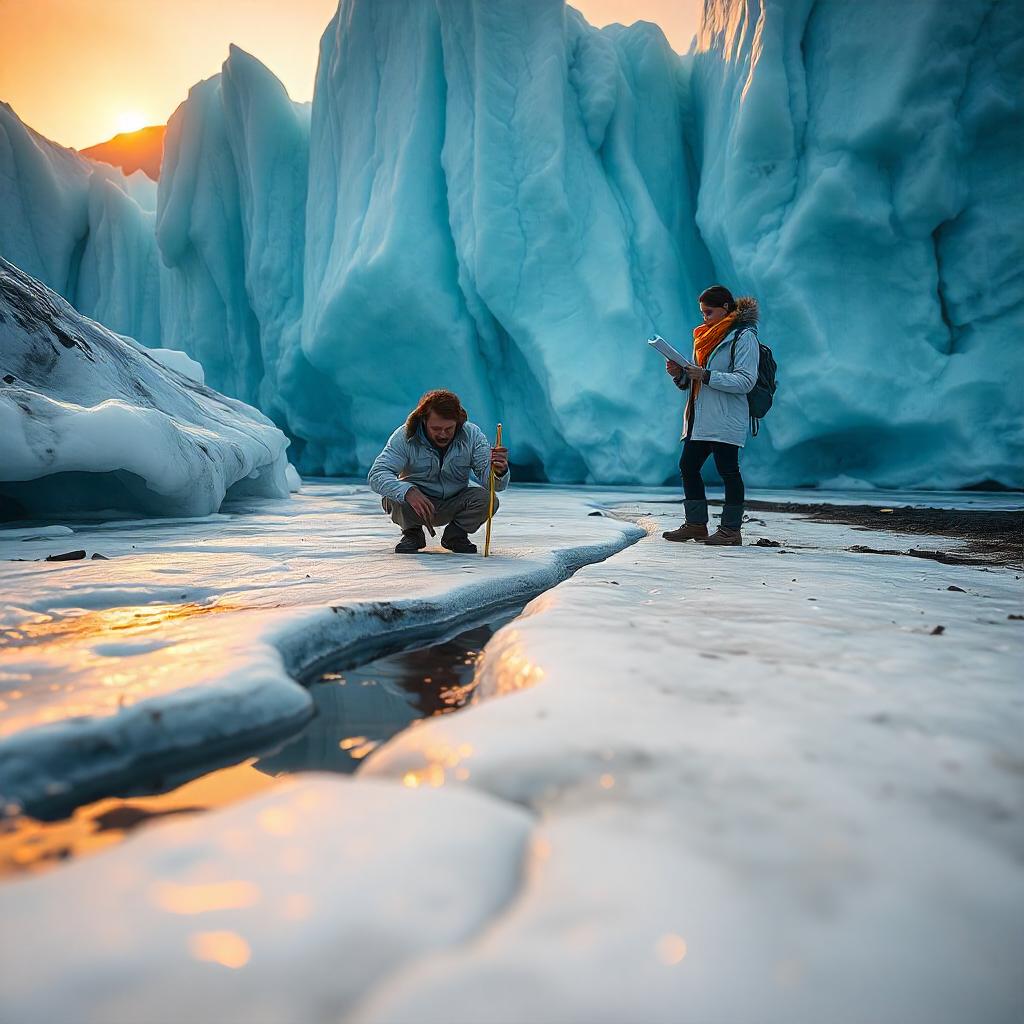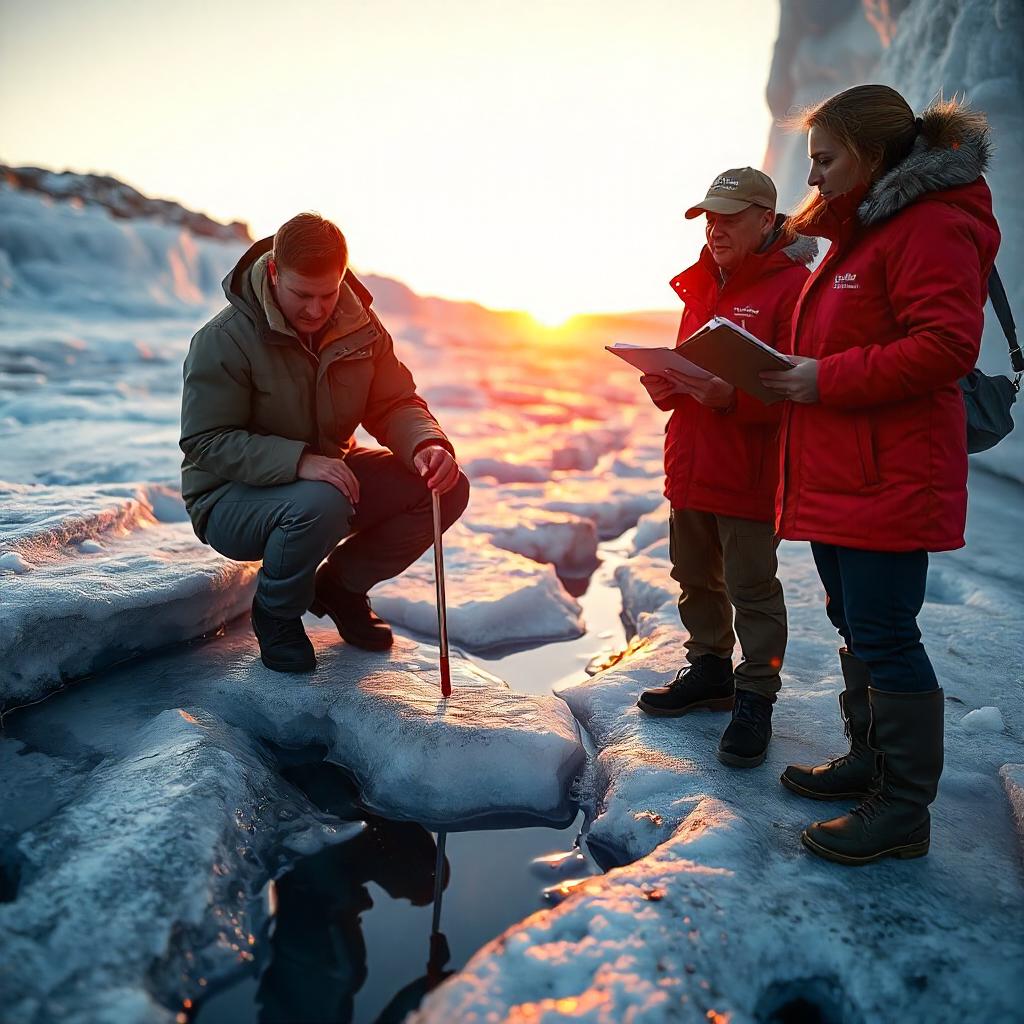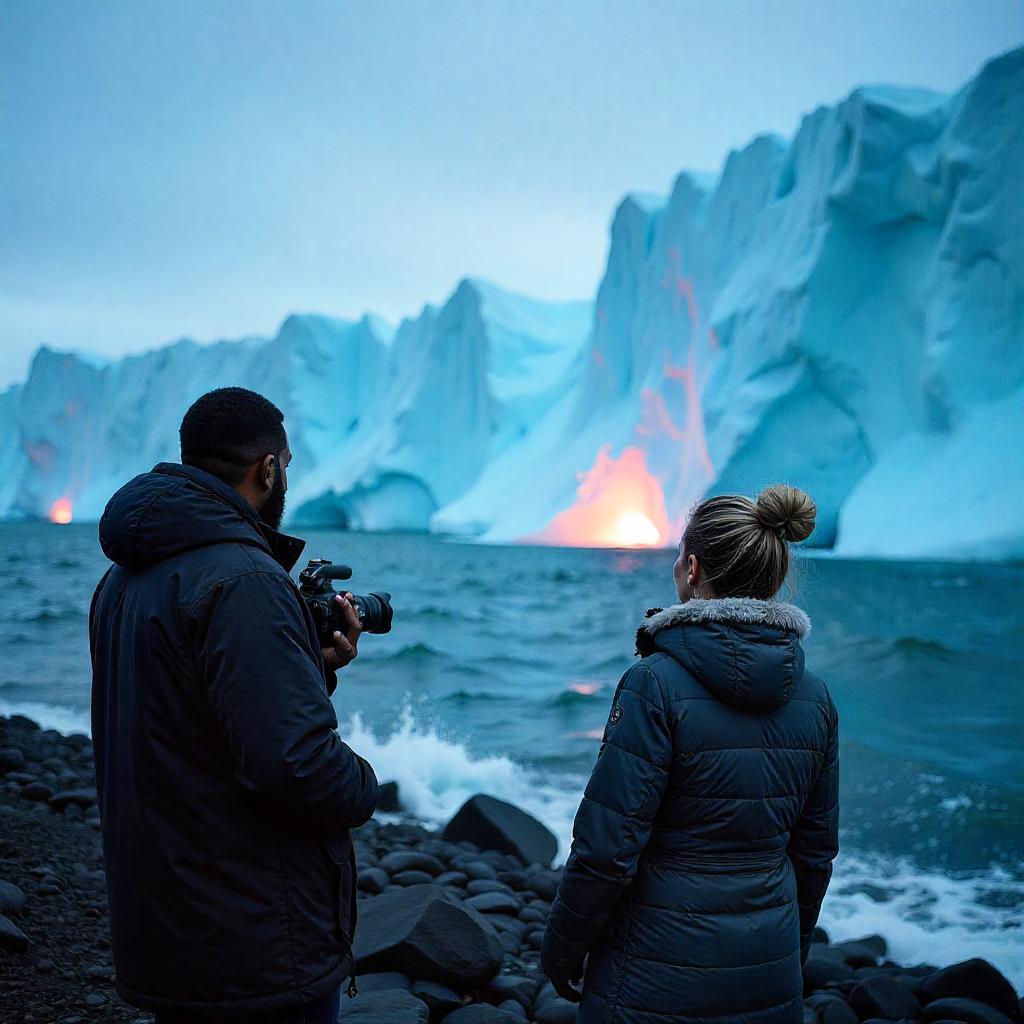Introduction: The Threat of the Doomsday Glacier
The Doomsday Glacier, officially known as Thwaites Glacier, is a colossal mass of ice located in Antarctica. This glacier has long been a subject of scientific study due to its potential to cause catastrophic consequences for global sea levels. Recent research suggests that Thwaites Glacier is rapidly destabilizing, with the potential to collapse in the coming years. As the glacier melts, it could significantly contribute to rising sea levels, which would have disastrous effects on coastal cities, ecosystems, and human populations worldwide. In this article, we will explore the science behind the glacier’s collapse, its potential impacts, and the urgency of addressing the threat.

What is the Doomsday Glacier?
Thwaites Glacier is part of the West Antarctic Ice Sheet (WAIS) and is located in the Amundsen Sea, on the Antarctic Peninsula. With an area of approximately 192,000 square kilometers, it is one of the largest and most important glaciers in the world. It is often referred to as the “Doomsday Glacier” because of its massive size and the catastrophic consequences its collapse could have on global sea levels.
Thwaites Glacier feeds into the Southern Ocean, and it is grounded far below sea level. This makes it particularly vulnerable to warming ocean currents, which have been melting the ice from beneath. If the glacier collapses, it could trigger a dramatic rise in global sea levels, threatening millions of people who live along coastlines.
Why is the Glacier Melting?
The primary driver behind the Thwaites Glacier’s destabilization is climate change, specifically rising global temperatures and warming oceans. The glacier’s ice sheet is melting from the base due to the intrusion of warmer ocean water underneath. This process, known as basal melting, has been accelerated over the past few decades due to global warming.
As the Earth’s temperatures rise, ocean currents also warm, particularly in polar regions. This causes the glacier’s floating ice shelf to thin, which destabilizes the entire structure. Over time, this can lead to the glacier’s retreat, causing a feedback loop where more ice is lost, and the glacier’s collapse accelerates.
What Does This Mean for Sea Levels?
One of the most alarming consequences of the Doomsday Glacier’s collapse is its potential to raise global sea levels. Thwaites Glacier alone holds enough ice to raise sea levels by approximately 3 meters (10 feet) if it were to melt entirely. While it is unlikely that the entire glacier will collapse in the near future, even a partial loss of ice could significantly contribute to rising sea levels over the next few decades.
Doomsday Glacier Current Projections for Sea Level Rise
According to the latest research, if the Thwaites Glacier continues to melt at its current rate, it could contribute to up to 3 meters of sea level rise by the end of the century. This would have catastrophic consequences for coastal cities, islands, and entire nations.
Some of the most vulnerable regions include:
- Low-lying coastal cities like Miami, New York City, and Jakarta
- Island nations such as the Maldives, which could be entirely submerged
- River deltas that provide food and livelihoods for millions of people, such as the Ganges-Brahmaputra Delta in Bangladesh and India
Even a rise of a few feet could lead to the flooding of vast areas, causing billions of dollars in damages, displacement of populations, and loss of biodiversity.
Doomsday Glacier What is the Timeline for the Collapse?

While scientists agree that Thwaites Glacier is melting rapidly, predicting the exact timeline for its collapse is challenging. The process is complex and involves many factors, including ocean currents, the glacier’s ice flow dynamics, and regional climate conditions. However, some studies suggest that the glacier could experience a “tipping point” by 2025, where the rapid melting could lead to an irreversible collapse.
According to a study published by the Proceedings of the National Academy of Sciences (PNAS), the Thwaites Glacier is showing signs of accelerated thinning and retreat. The collapse may take decades, but the early stages of this process are already underway. If nothing is done to mitigate the effects of climate change, the glacier could contribute to sea level rise much sooner than previously anticipated.
Why is This Happening Now?
There are several factors contributing to the urgency of the situation:
- Global Warming: Rising global temperatures are warming the Southern Ocean and causing the ice shelves to thin. This process has been particularly pronounced over the last 30 years.
- Ocean Currents: Warm ocean currents have reached beneath the ice sheet, where they are melting the glacier from below. This has been a key factor in accelerating the ice loss.
- Feedback Loops: As the glacier melts, it contributes to a feedback loop. The loss of ice reduces the glacier’s weight, causing it to retreat even faster and accelerate the overall process.
- Scientific Discovery: Recent studies, such as those led by NASA and other international research organizations, have provided more detailed and alarming insights into the glacier’s state of instability, prompting increased attention.
Potential Human Intervention: Can We Stop the Collapse?
Given the potentially catastrophic effects of the Thwaites Glacier collapse, many are asking: Is there anything we can do to prevent it? The answer is complicated, as stopping or even slowing the glacier’s collapse will require massive, coordinated efforts on a global scale. Here are some potential interventions:
- Reducing Greenhouse Gas Emissions: The most immediate and effective way to slow the collapse of glaciers like Thwaites is to reduce global carbon emissions. By transitioning to renewable energy sources, implementing carbon capture technologies, and reducing deforestation, we could limit further warming of the planet and slow the rate of ice melt.
- Geoengineering Solutions: Some researchers are exploring geoengineering solutions, such as cooling the oceans around Antarctica or creating artificial barriers to protect the ice shelves from warm ocean currents. These methods, however, remain speculative and come with significant risks and unknown consequences.
- Strengthening the Ice Shelf: Another proposed solution is to reinforce the ice shelf by injecting water beneath it to refreeze the ice or constructing physical barriers to slow the melting process. While these technologies are still in the experimental stage, they could buy the planet more time to address the root causes of climate change.
- Global Collaboration and Policy Action: The most critical factor in mitigating the effects of Thwaites Glacier collapse is global cooperation. The Paris Agreement, which seeks to limit global warming to below 1.5°C, is one of the best tools we have to prevent further destabilization of the glacier. Countries must work together to reduce emissions and invest in climate adaptation strategies to protect vulnerable populations.
Doomsday Glacier What Can We Expect in the Future?
If the Doomsday Glacier collapses, the world will face severe consequences in terms of flooding, displacement of millions of people, and immense economic losses. Coastal cities will have to build costly flood defenses, and entire ecosystems could be disrupted. Furthermore, food production, water access, and urban infrastructure in low-lying areas will be at risk.
However, with aggressive action to reduce greenhouse gas emissions, implement geoengineering, and adapt to changing climates, there is still hope. While Thwaites Glacier’s collapse might be inevitable in the long term, the speed at which it happens is something that humanity can influence.
Doomsday Glacier Conclusion: A Call for Action
The melting of the Doomsday Glacier is no longer a distant threat—it is a crisis that could unfold in the coming years, with significant implications for global sea levels. While we may not be able to prevent Thwaites Glacier from melting entirely, we can still take steps to slow the process, mitigate its impacts, and prepare for the challenges ahead.
As we approach 2025, the need for urgent action to combat climate change and address the destabilization of the Doomsday Glacier has never been more critical. Global cooperation, political will, and innovative solutions are required to protect our planet from the devastating consequences of rising seas.
We must act now, before it’s too late.
This blog provides a detailed overview of the situation surrounding Thwaites Glacier and its potential collapse. If you’d like further elaboration on any particular aspect of the topic or have additional questions, feel free to ask!

The Doomsday Glacier Collapse: The Urgent Need for Human Intervention
Introduction
- Overview of the Doomsday Glacier
- Definition of the “Doomsday Glacier”
- Its scientific name: Thwaites Glacier
- Geographic location: Western Antarctic Ice Sheet
- Importance in global sea level rise
- Rising Alarm Bells
- Recent studies highlighting the glacier’s rapid melting
- Its potential to contribute massively to global sea level rise
- Urgency in addressing the situation
What is the Doomsday Glacier?
- Physical Characteristics
- Size and structure of Thwaites Glacier
- Location within the Antarctic continent
- The role of Thwaites Glacier in the Antarctic Ice Sheet
- Global Impact on Sea Levels
- Potential sea-level rise from Thwaites’ collapse
- How much of the world’s coastal land could be submerged
- Effects on coastal cities and infrastructure
Why is the Glacier Collapsing?
- Warming Oceans and Climate Change
- Impact of global warming on ocean temperatures
- The process of melting from beneath the ice shelf
- How rising ocean temperatures exacerbate ice loss
- Thinning Ice and Ice Shelf Instability
- The process of ice shelf thinning
- Melting of the ice shelf’s floating portion
- Role of warm ocean currents and ice sheet dynamics
- Natural vs. Anthropogenic Factors
- Comparison between natural climate cycles and human-induced warming
- The acceleration of glacier collapse due to human activity
Consequences of the Glacier’s Collapse
- Global Sea Level Rise
- Estimated contribution to global sea levels
- Potential impacts on low-lying regions and islands
- Ecosystem Disruption
- Loss of biodiversity in affected coastal and marine ecosystems
- Displacement of species dependent on Antarctic ice shelves
- Potential impacts on global weather patterns
- Human Impact
- Displacement of populations in vulnerable regions
- Economic costs associated with flooding and infrastructure loss
- Potential impacts on agriculture, fresh water supply, and urban planning
Current Scientific Understanding of the Doomsday Glacier
- Recent Research and Studies
- Overview of recent studies (e.g., NASA’s satellite monitoring, ice core analysis)
- Findings on the glacier’s rate of collapse and vulnerability
- Collaboration among international research teams to understand and monitor changes
- Uncertainty and Unknowns
- The difficulty in predicting the exact timeline of collapse
- Factors that complicate predictions (e.g., variability in ice sheet behavior)
- Uncertainties in forecasting global climate changes and ocean currents
Human Intervention: Can We Prevent the Collapse?
- Technological Interventions
- Geoengineering solutions (e.g., cooling the oceans, strengthening ice shelves)
- Feasibility and risks of artificial cooling methods
- Structural reinforcement of ice shelves and glaciers
- Is geoengineering a viable option?
- Reducing Greenhouse Gas Emissions
- The role of reducing carbon emissions in slowing down global warming
- The global transition to renewable energy sources
- Challenges in global cooperation and the need for urgent climate action
- Scientific Solutions and Adaptations
- Developing more advanced climate models to predict glacier behavior
- Ongoing international scientific initiatives to monitor and study the glacier
- Potential future technological breakthroughs (e.g., advanced ice sheet preservation techniques)
- Reforestation and Natural Solutions
- The role of ecosystems in absorbing carbon and cooling the planet
- Large-scale reforestation as a means to counteract climate change
- How natural solutions can complement technological interventions
Ethical and Political Implications of Human Intervention
- Global Inequities
- How the impacts of glacier collapse will affect different regions unequally
- Disproportionate effects on poorer nations and vulnerable communities
- The responsibility of wealthy nations to lead the fight against climate change
- Debate Over Geoengineering
- Ethical dilemmas surrounding geoengineering solutions
- Concerns about unintended consequences and environmental side effects
- Risks of relying on technology to solve what is fundamentally a political and social problem
What Can We Do to Prevent the Collapse?
- Individual Action
- Reducing personal carbon footprints through lifestyle changes
- Supporting sustainable businesses and policies
- Raising awareness about climate change and advocating for political action
- Government and Policy-Level Interventions
- The role of governments in implementing carbon tax policies and stricter regulations
- International climate agreements like the Paris Agreement
- How global cooperation can mitigate the worst impacts of climate change
- The Role of Innovation and Collaboration
- The importance of scientific collaboration across nations
- Investing in renewable energy technologies, green innovation, and sustainable infrastructure
- Encouraging public-private partnerships to fund climate research and solutions

Conclusion
- Urgency and Hope for the Future
- While the threat of the Doomsday Glacier collapse is real, human intervention can still play a significant role in slowing it down or preventing catastrophic sea-level rise
- The need for urgent action, from individual contributions to international agreements, has never been clearer
- The importance of continued research, global collaboration, and innovation in addressing the climate crisis and its potential impacts
